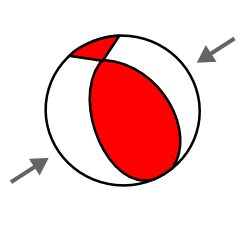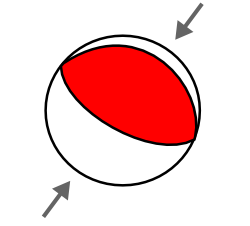![]() This is a bit of an experiment. People seem to quite appreciate my posts that place significant earthquakes in their tectonic context (e.g. #1, #2, #3). However, I can’t write a detailed post for every single one. So I’m wondering if it might be worth producing a brief weekly summary of any significant earthquakes, showing their focal mechanisms together with a brief tectonic interpretation. Below I do this for all magnitude 6+ earthquakes reported by the USGS in the past seven days. The format is admittedly a bit unpolished right now, but I’m interested if you’d be interested in me making this a regular feature.
This is a bit of an experiment. People seem to quite appreciate my posts that place significant earthquakes in their tectonic context (e.g. #1, #2, #3). However, I can’t write a detailed post for every single one. So I’m wondering if it might be worth producing a brief weekly summary of any significant earthquakes, showing their focal mechanisms together with a brief tectonic interpretation. Below I do this for all magnitude 6+ earthquakes reported by the USGS in the past seven days. The format is admittedly a bit unpolished right now, but I’m interested if you’d be interested in me making this a regular feature.
Saturday 26 June: M 6.7, Solomon Islands, Depth 35 km
 A transpressional focal mechanism, with mostly NE-SW compression. The direction of shortening is consistent with the NE subduction of the Australian plate beneath the Pacific plate under the Solomon Islands. Historical seismicity suggests that this quake occured near the subduction interface.
A transpressional focal mechanism, with mostly NE-SW compression. The direction of shortening is consistent with the NE subduction of the Australian plate beneath the Pacific plate under the Solomon Islands. Historical seismicity suggests that this quake occured near the subduction interface.
(USGS page)
Wednesday 30 June: M 6.3, S of Fiji, Depth 536 km
 Focal mechanism indicates extension. The great depth of the rupture, and it’s location behind the Tonga Kermadec arc, suggests it occurred far down dip on the subducting Pacific Plate, which is stretching under its own weight as it sinks deeper into the mantle.
Focal mechanism indicates extension. The great depth of the rupture, and it’s location behind the Tonga Kermadec arc, suggests it occurred far down dip on the subducting Pacific Plate, which is stretching under its own weight as it sinks deeper into the mantle.
(USGS page)
Wednesday 30 June: M 6.2, Oaxaca, Mexico, Depth 20 km
 Focal mechanism indicates NE-SW compression. This is consistent with the convergence direction of the subduction zone off the west coast of Mexico (Cocos plate subducting beneath the North American plate), but the rupture is too shallow to be associated with the subduction thrust itself. This earthquake is likely caused by strain transferred across the locked subduction boundary is being accommodated by thrust faulting in the overriding plate.
Focal mechanism indicates NE-SW compression. This is consistent with the convergence direction of the subduction zone off the west coast of Mexico (Cocos plate subducting beneath the North American plate), but the rupture is too shallow to be associated with the subduction thrust itself. This earthquake is likely caused by strain transferred across the locked subduction boundary is being accommodated by thrust faulting in the overriding plate.
(USGS page)
Friday 2 July: M 6.3, Vanuatu, SW Pacific, Depth 34 km
 Focal mechanism indicates E-W compression. In this region, the Australian plate is subducting to the east beneath the Pacific plate, and the depth of the rupture is consistent with it being a thrust close to the subduction interface.
Focal mechanism indicates E-W compression. In this region, the Australian plate is subducting to the east beneath the Pacific plate, and the depth of the rupture is consistent with it being a thrust close to the subduction interface.
(USGS page)



Comments (9)